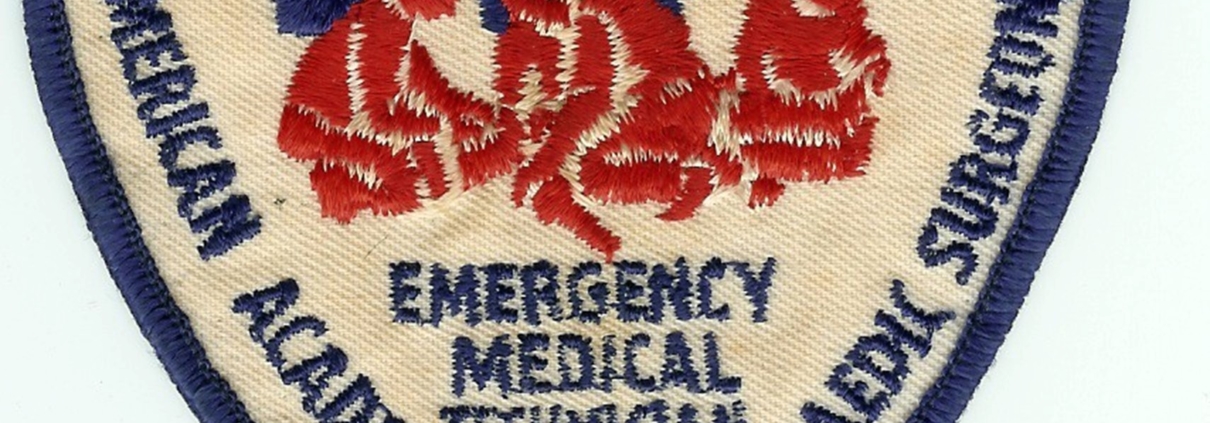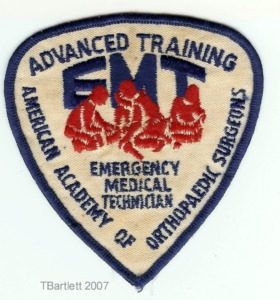
1971: AAOS PRACTICAL COURSE PATCH

In the late 1960s and early 1970s, the American Academy of Orthopedic Surgeons (AAOS) Committee on Injuries began sponsoring three-day emergency care practical training courses. These programs built upon the Red Cross Advanced First Aid Course by exposing participants to hands-on exercises using the innovative devices and best practices that emerged during the mid-20th century. The courses were locally sponsored by a prominent AAOS member and orthopedic surgeon, and introduced students to blood pressure monitoring, vehicle victim extrication, childbirth, scoop stretcher, positive pressure demand valve, bag/mask/valve (BMV), Brook Airway, oral airway use and a host of other ambulance technologies that were emerging in those pioneering years. The official text of the course was the AAOS Emergency Care and Transportation of the Sick & Injured, better known as the “Orange Book.”
The AAOS Practical Course pre-dated the original Department of Transportation’s 81-hour EMT-Ambulance courses that almost all states had implemented by the mid-1970s. Students who applied to attend the AAOS course were required to show a current American Red Cross Standard First Aid (eight hours of study) and Advanced First Aid (16 hours) course completion certificates prior to being allowed to attend and graduate the 24 hour AAOS course. Completing these course (a combined 48 hours) allowed the graduates to display the AAOS Emergency Medical Technician EMT patch.
The Grady Hospital Ambulance Service and Metro Ambulance Service, both of which were in the City of Atlanta in the late 1960s, required all attendants to have completed the AAOS course. It was not until the fall of 1971 that Georgia implemented its 81 hour DOT basic EMT course. Robert Wells and Hugh Thompson were famous Atlanta AAOS physicians which sponsored these courses from 1969 to 1972.
Submitted to NEMSM August 2007, author unknown
